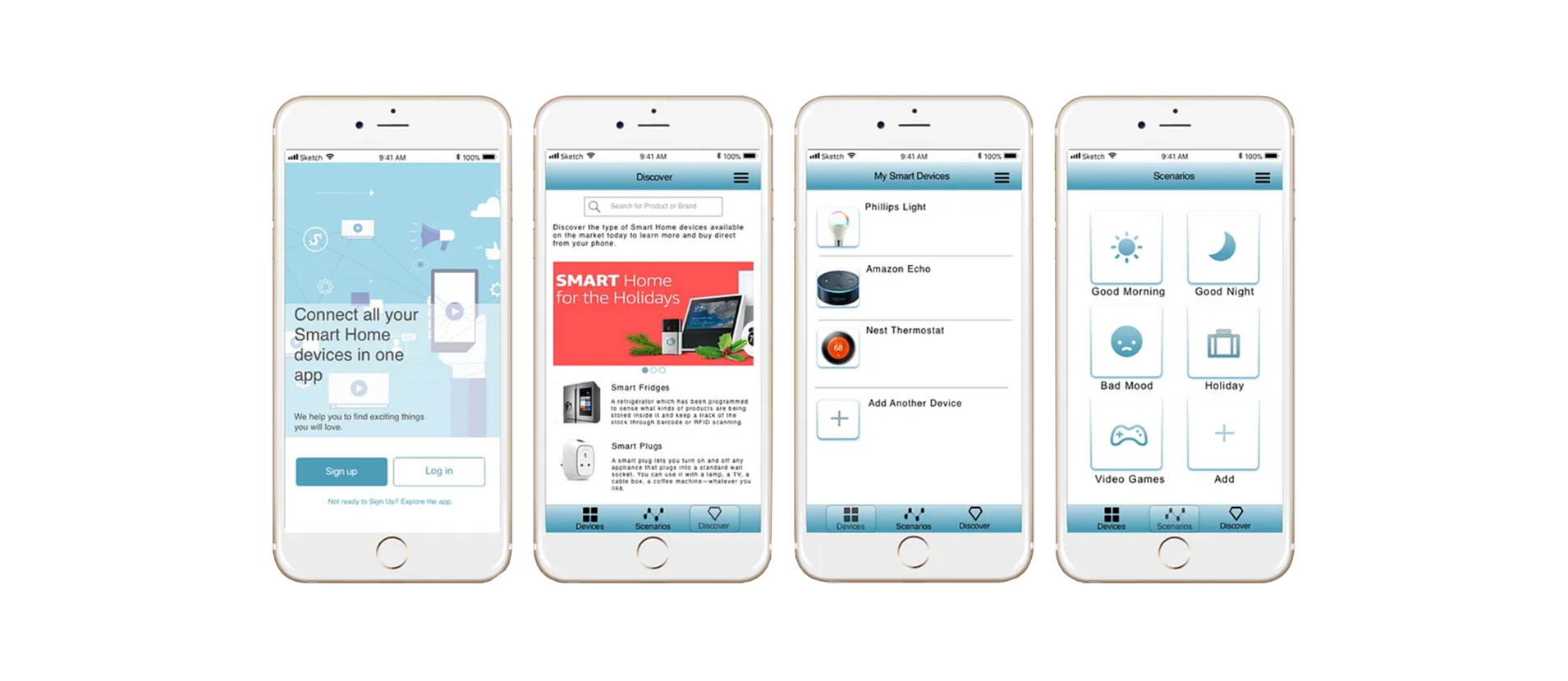
Brief Overview
'Smart' is a smart home app that aims to integrate monitoring and controlling of smart home appliances from a single app. It provides a more efficient way of managing member accounts and to control devices seamlessly. Smart is designed keeping the end user in mind.
- Our client is a start-up from the US which has plans to launch their new product range in Europe later this year.
- They have developed a range of smart home devices such as smart plugs, lights, sensors, cameras, alarms etc., which are targeted at high-end consumers.
- The company is interested in creating an interface that helps users to easily access and control these products from a mobile app.
- My job was to design an application that makes connecting, controlling and using smart home devices useful, relevant and enjoyable.
Problem Statement
" Smart home residents tend to own multiple smart devices and want them to work together under a single app. They also want an option where devices could be scheduled to run by the user and be automated accordingly. An another feature most of them desired was sharing the access of devices and to have admin control over them. "
Hypothesis
We believe that by developing an app that allows our users to manage and control their devices from anywhere, we will make their experience more desirable, usable and convenient. We will know this to be true when we see these users use this app over the smart device’s partner app.
Research
Research Goals
Primary:
To understand how different types of users control (and would control) their smart home devices.
Secondary:
To understand the demographic of users who currently use and don’t use smart home devices to build detailed personas.
Research Methods
- Survey
- Interview
- Observations
Survey
We started off the process by creating a survey using google forms to send out to as many people as possible — we did not have an initial target audience as this was discovery exercise to collate quantitative data.
Findings:
- 43 participants
- 57% Male
- Equal split of users that own both a laptop and a smartphone (highest percentage were Apple products)
- Average age: 25–30
- 70% don’t own smart home devices
- If you are a homeowner you are more likely to own a smart home device.
Existing Users:
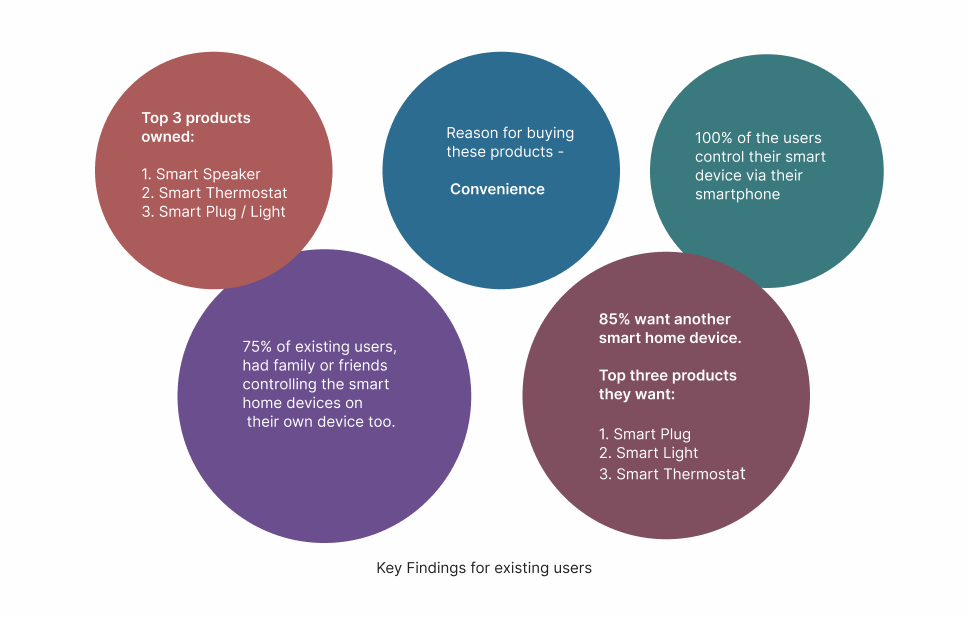
New Users:
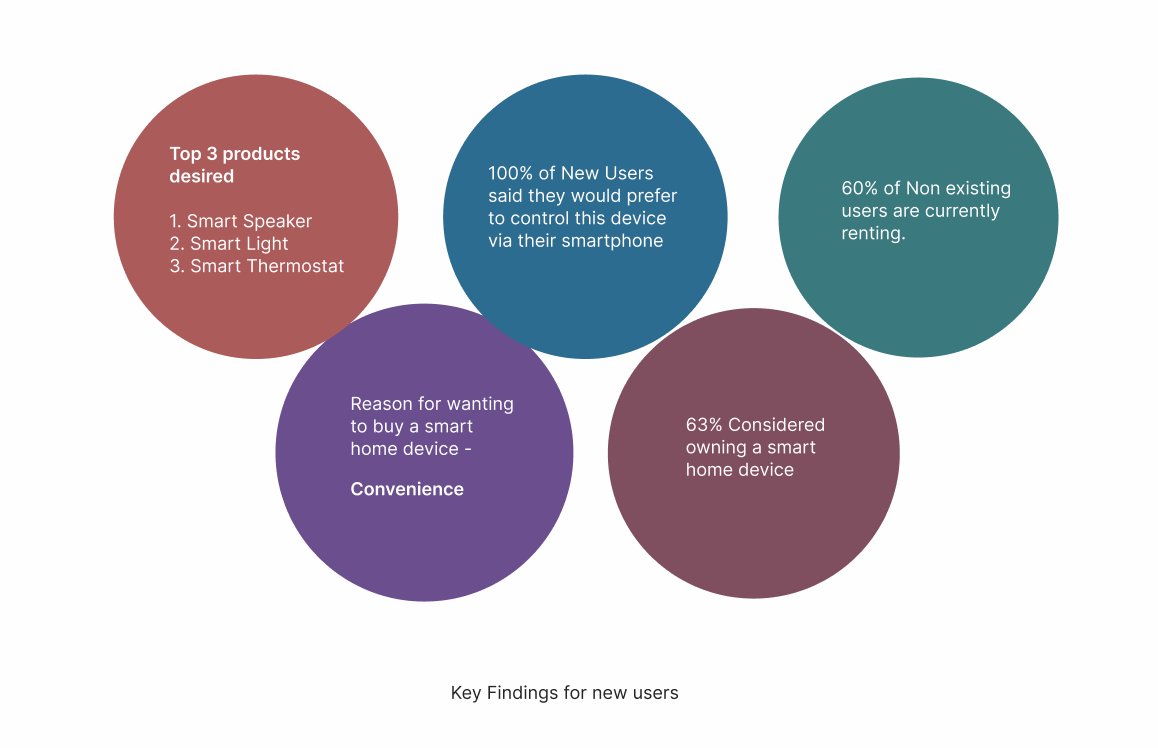
Interview
As a team, we interviewed Justin who owns multiple smart home devices but the main focus of the interview was around the Amazon Echo. The interview was semi-structure with a brief list of points to cover.
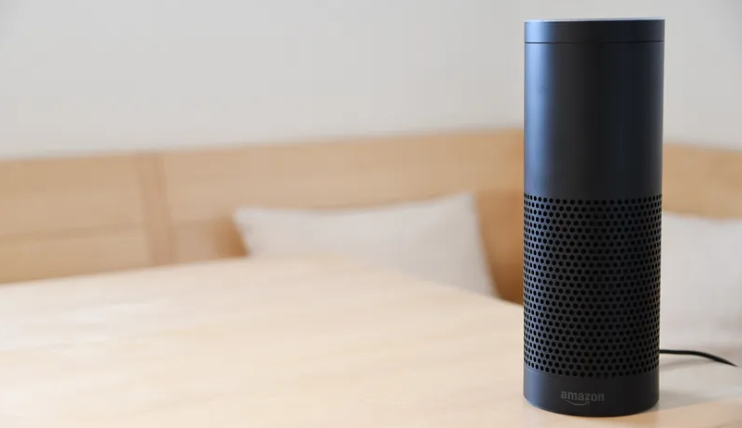
User Quotes from Interview
- “The app is strange, it’s just not very integrated with the device itself.”
- “When playing music there is a minimal amount of integration.”
- “You can skip tracks forward however, you can’t set up songs on your phone that day and then control through the phone.”
- “If you have more than one device and you start to speak to one, the other ones in the other room starts going off.”
- “You can’t properly set up songs and stuff on your phone on that day and then do it through the phone; you kind of have to ask Alexa what to do and then you can just skip tracks and things on the phone.”
Observations
As a team, we have decided to observe a number of people using their smart home devices on YouTube. This approach enabled us to gather different insights based on the type of video observed such as review, comparison, unboxing and first impressions.
The following smart home devices were observed:
- Smart Security Camera (Nest)
- Smart Oven (June)
- Smart Vacuum (Dyson)
- Smart Speakers (Amazon Echo)
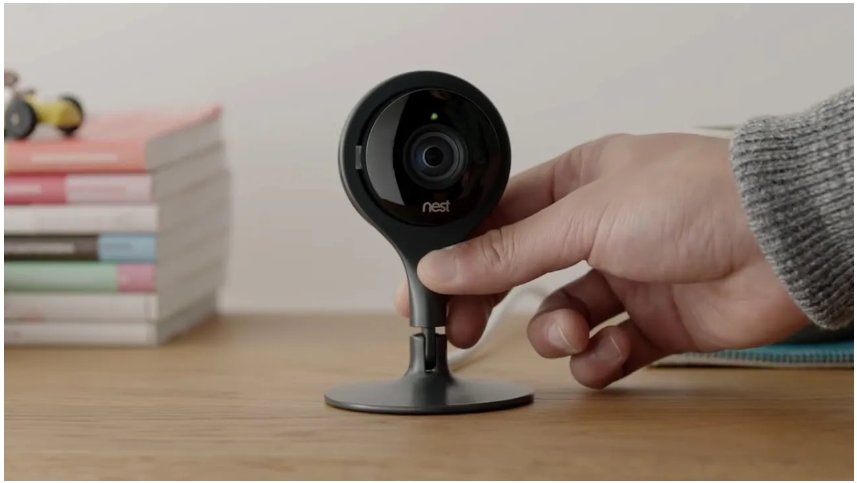
Nest Cam Review found on Youtube https://www.youtube.com/watch?v=gVXpTks4cRk.
Personas
With our research data, two personas were created which were broken down into existing and non-existing users — These personas were used to develop solutions, user requirements and product functionality for a user interface.
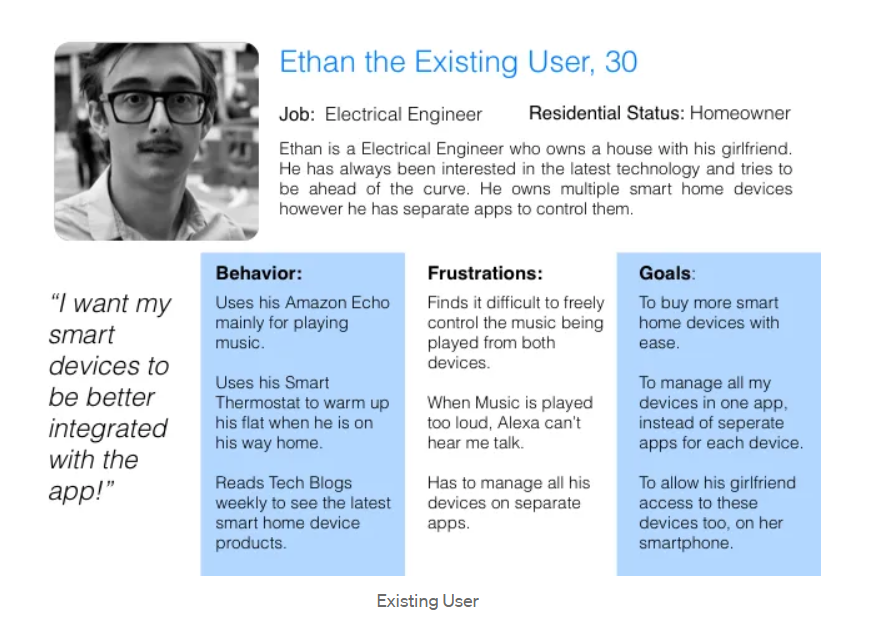
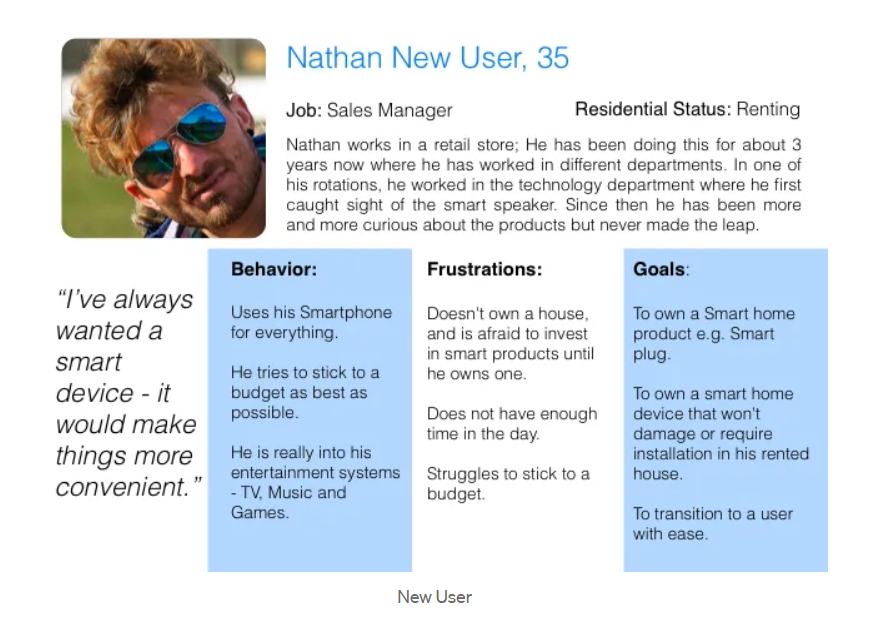
Competitive Analysis
We then conducted a competitive analysis by looking at current 3rd party apps that are used for managing multiple smart home devices to understand the range of features they offer — This helped us to understand user’s expectations.
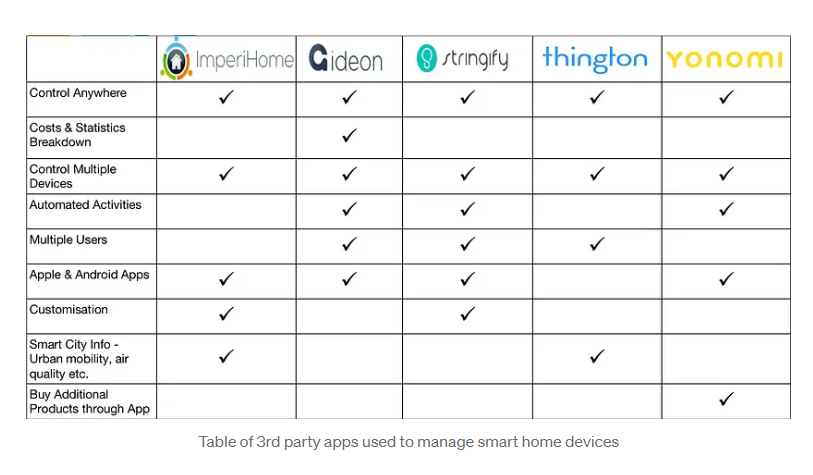
Ideation
As a group, we used the Brain writing technique to ideate as many features as possible using our How Might We Questions.
Brain Writing is where each person writes down or sketches the beginning of an idea silently on a Post-it. This could be as simple as a single word or a shape. After three minutes, the person passes the paper to his neighbour, who continues the idea. This repeats around the circle until it gets all the way back around to its originator.

All our ideas!
Features
After our Brain writing session, we dot voted on the best features for our personas.
Key features:
- Discover Other Products: This is a feature in the app where it will allow users to click on different type of devices which provides explanations, video demonstration, features and customer reviews of the product.
- Purchase Additional Devices: Purchases will automatically be added to the device draw — feedback will be provided on progress of delivery and expected arrival date.
- Trial Scheme: Aimed at targeting new users who believe smart home devices are expensive. Get the device for free initially and the user would only pay after a month or introduce a payment plan.
- Latest Tech News: the user can read all about the latest smart home news and keep up to date on the latest upgrades and features.
- Choose & Edit playlists from your phone and speaker: This feature will allow the user better control of choosing music through both the app and the device to improve the integration between the two. (Smart speaker only).
User Flow
This User Flow demonstrates the on-boarding of a new or additional product.
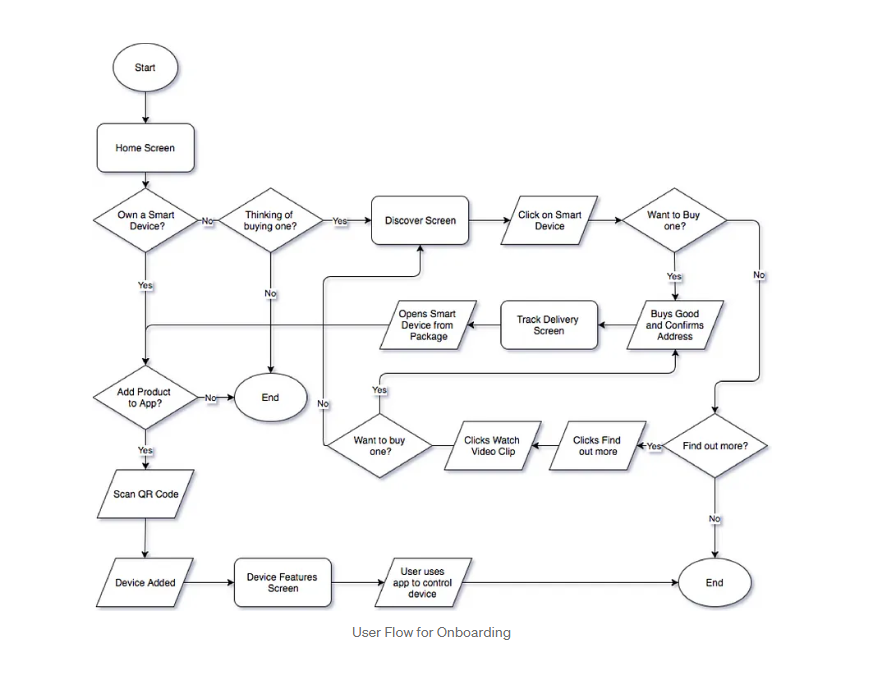
Mind Map
I decided to focus on only 4 smart home devices because these were the main products owned and desired from our survey.
Creating the mind map allowed me to to link and show relationships between the products and the actions our users would want to take.
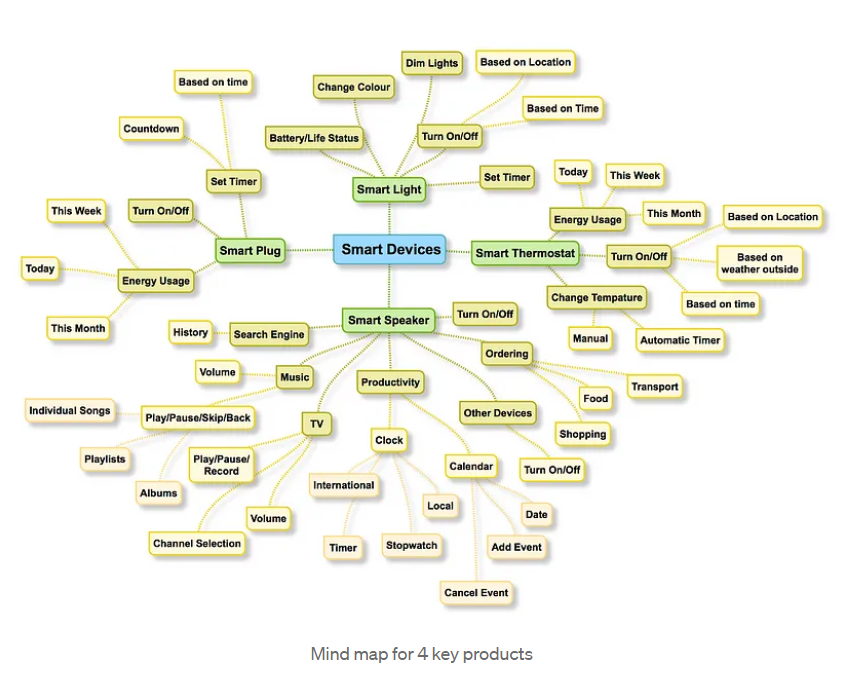
Sketches
Once I had an understanding of the different actions you may want to take, I completed a site map to understand the information architecture of the app then started sketching.
I set my self a limit of 15mins to draft the main screens of the app — making this a time boxed exercised ensured I didn’t obsess on the detail.
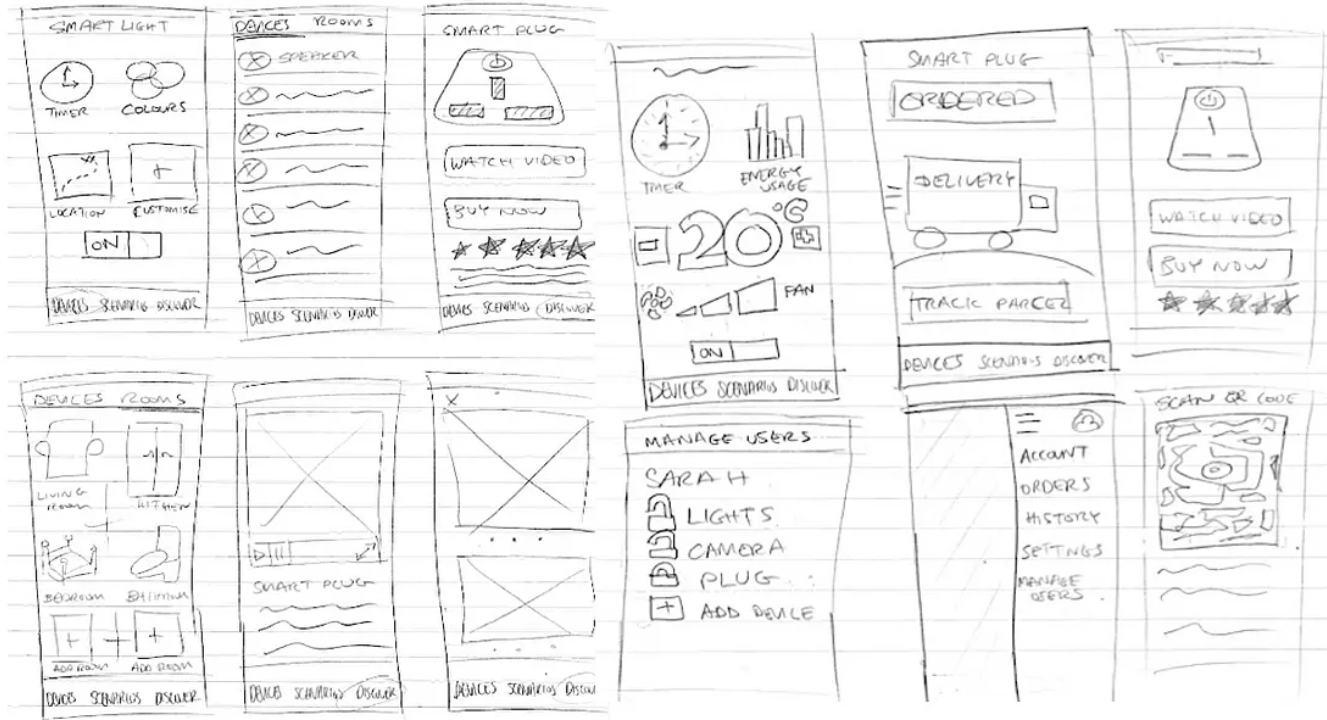
Initial Wireframes
Wireframes
After the sketches were completed, I moved onto the wireframes to showcase spacing and layout — at this point purposely left out any wording or images.
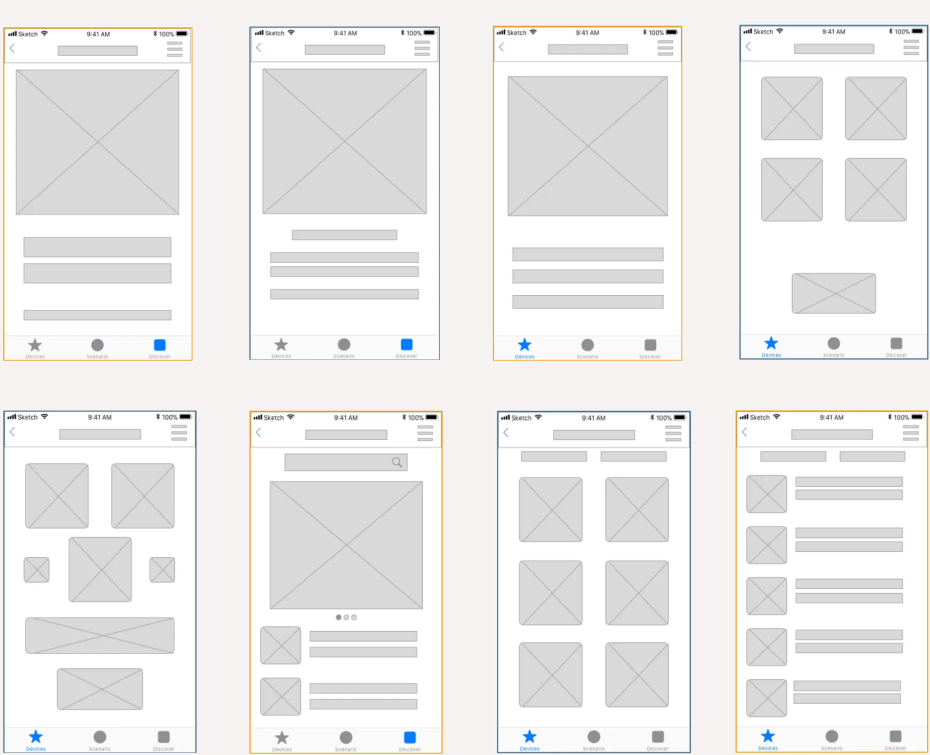
Wireframes to demonstrate spacing and layout
High Fidelity Wireframes
After the wireframes were completed — text, images and colour were added.
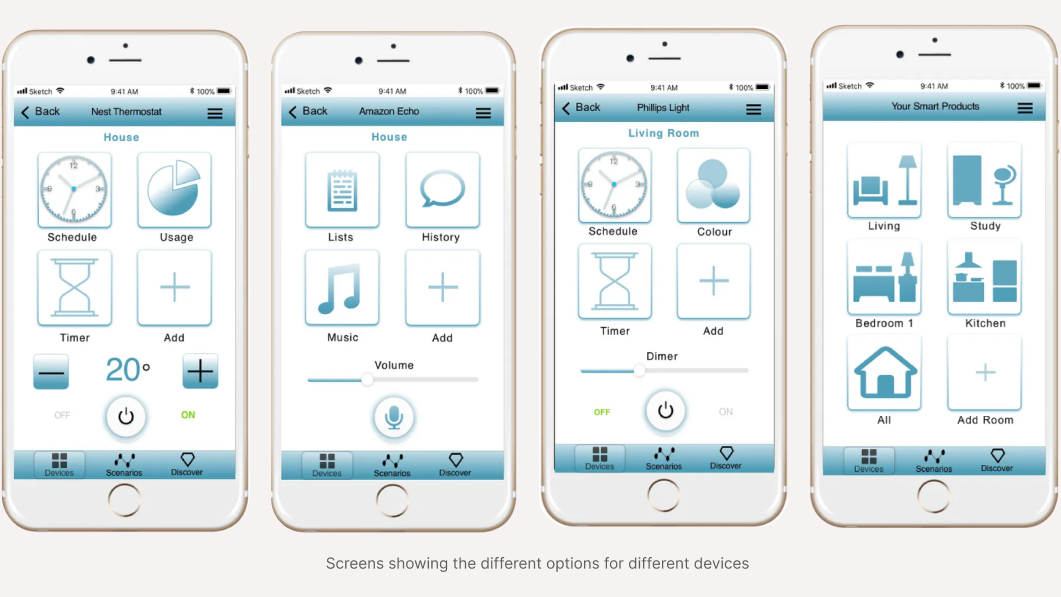
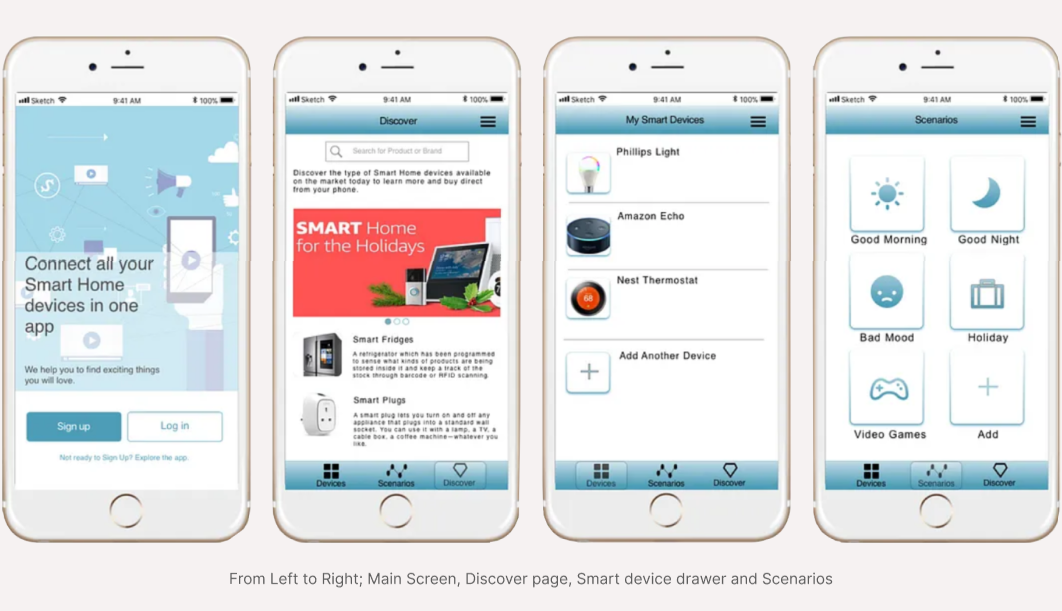
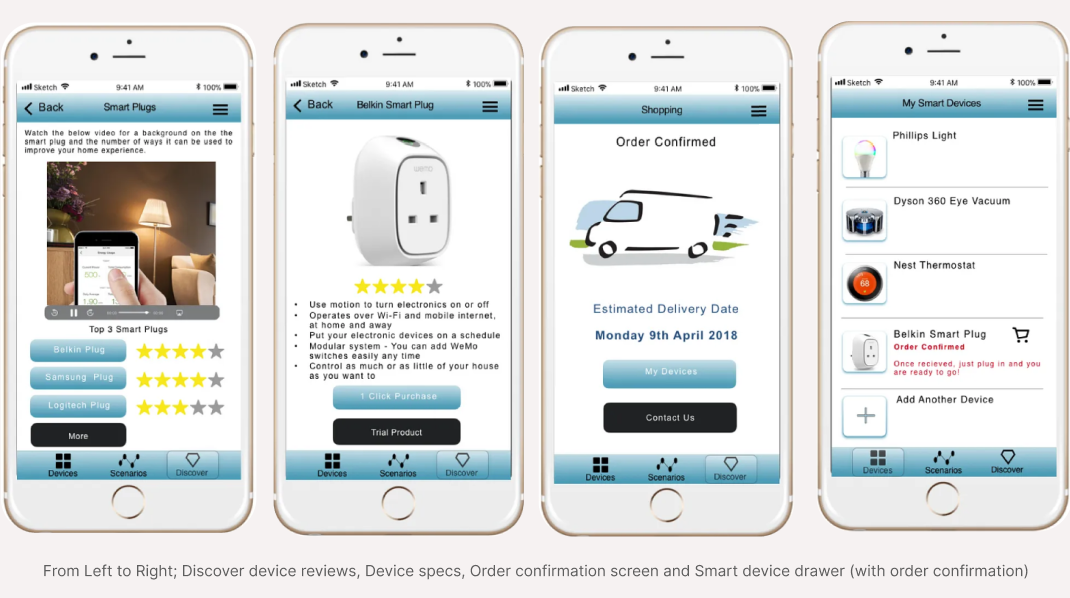
Annotations
To help describe the screens and features, some annotations for the main screens were added.
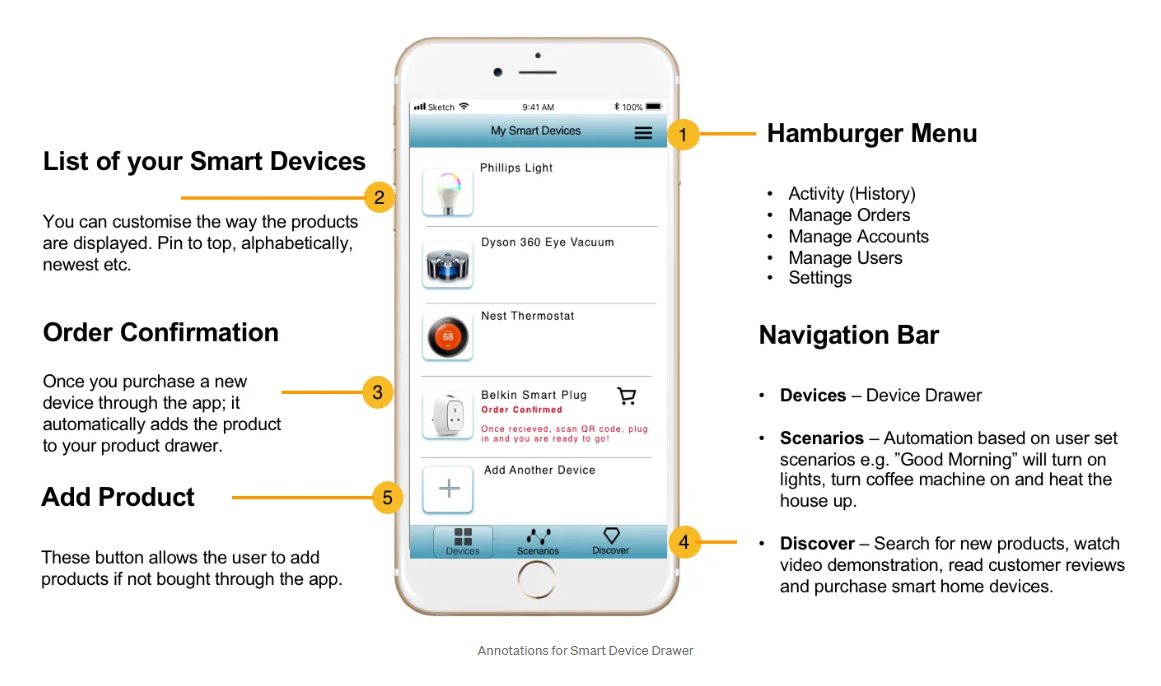
Conclusion
I managed to create a mobile app which will allow our users to control multiple smart home devices all from one app including some new features that the main competitors do not have such as discovering and buying additional products through the app. These features should significantly increase the visibility and opportunity to discover new smart home products.
This was a great brief and thoroughly enjoyed learning about different benefits and features of different smart home devices on the market today — looking forward to continued releases.
